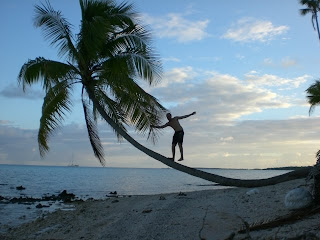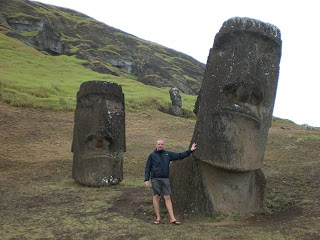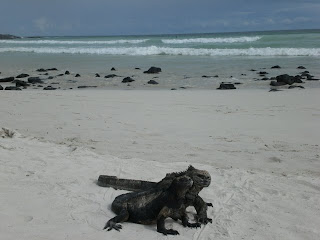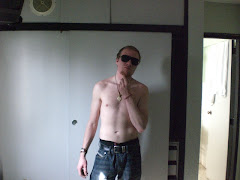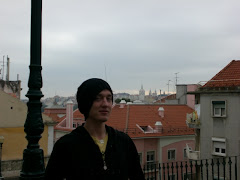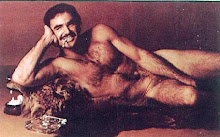Meidän super meno peli Sundeer 56  Hylje tulossa vähän lepäilee meijän kumi veneelle
Hylje tulossa vähän lepäilee meijän kumi veneelle
Meitsi ja kilpparit

Paul Mackay Tarinan kirjoittaja

Urpo turisti Numero 1

Urpo turisti numero 2

Panama to Tahiti, part one
I was sitting at the computer in mid January, in the midst of yet another snowstorm,
checking through boating sites, when I see an ad, “crew wanted, Panama to Tahiti. The
captain was an ex royal navy Lieutenant Commander, the boat was a Sundeer 56 with all the
best equipment, and he was on a circumnavigation out of Britain. There would be lots of
islands to explore and he wasn’t in any hurry. Well, that was enough for me, and before I
knew it, I was headed for Central America. Brian (the captain) met me at the airport, and we headed back to the boat. Upon
arrival I met the second crewmember, Jukka, a 25-year-old Finnish backpacker, who was
working his way around the globe. We spent a few days provisioning the boat and getting to
know each other, and then took off. The first day there was plenty of Panama Canal traffic to watch, but by the next day
that too had disappeared. The weather was clear with a following wind, and calm seas. A
flock of birds appeared off the bow, milling about the surface. As we approached, whales
appeared, and then we hooked on to, and caught two skipjack tuna. Turns out that the whales
had created a bubble net around a school of baitfish, and were taking turns feeding on them.
With all the excitement, it was hard to decide what to watch. Soon land had disappeared over the horizon and we settled into the voyage. Next
stop, the Galapagos. On the third day we passed just to the west of Malpelo Island, a small
rocky pinnacle owned by Columbia, which is off limits for visitors. We continued on to the
southwest, motoring part of the time through calm seas. On the morning of the 8th day, we
caught site of San Christobal Island, the eastern most of the Galapagos chain. For most of
the day we followed along the north shore, skirting Leon Dormido, an impressive rock, split
by a narrow channel (that can be snorkeled). Soon we came to the port of Baquerizo Moreno,
the capital of the Galapagos. The port was packed with boats, as the ARC round the world
rally had arrived just ahead of us, so we anchored well offshore and waited for customs. Once past the formalities, we unloaded the inflatable and headed for shore. It felt
good set foot on solid ground again. We had a few days here as the captain was waiting for
some rigging parts to arrive. Jukka and I decided to rent bicycles to explore inland to find
a crater lake I had been told about. After a 4 hr uphill trudge we had gotten to the top of
the island, but all we could see was a weed filled depression. We were about to head back,
when some locals in a truck stopped and pointed to a locked gate. Apparently there was a
trail up to the lake, but it was closed to the public because someone had “stocked” the lake
with Tilapia fish from Central America. They were greedily devouring all the endemic insect
life in the lake, and scientists were now trying to eradicate them. So much for local
concern for the environment. We did sneak up the trail to see the lake as we had worked so
hard to get there. The trip back down was much faster, given the fact that the bicycles had
basically no brakes, and after a memorable 20-minute freefall we rolled back into town. We spent the next couple of days exploring, shooing sea lions off the dingy and swim
platform, as well as enjoying time ashore in town, but soon it was time to head off to the
island of Santa Cruz, where we were promised our parts would arrive. After a good day’s run
with the wind, we arrived in Puerto Ayora, the main tourist town in the archipelago.
Entering the harbor, Brian was staying well to the north shore, away from the main mooring
area. After pointing out to him that this area was not where we should be, he stated that we
were fine. As the next swell passed us, the keel set down heavily on a rock shelf, and the
boat quickly listed over. Panicking, the captain shouted for us to unload the dinghy. As we
did so, a couple of local water taxis came to our aid, and we threw them lines to get us
turned around and off the reef. A few more swells passed and we were able to get back to
deeper water, anchoring amongst the other boats. Luckily, damage was limited to some scuffs
on the keel, and to egos. We were told later that another yacht had recently sunk after an
encounter with that same rock. Brian then proceeded to drink himself into oblivion. Over the next several days there was plenty of exploring. The Darwin Research Station was
well worth the visit, and we saw Jorge Solitaire (lonesome George), the last Tortoise from
one of the outer islands. Each island had a different species of tortoise, each evolved to
take advantage of the vegetation available to them. Some had long necks to reach higher,
while others had more streamlined shells to better get through thick undergrowth. We also
walked out to Tortuga Bay, the only sand beach accessible to tourists where we spotted
marine iguanas, and also some of the strangest tree cacti I have ever seen. On another day, Jukka and I hitched up to the north end of the island, visiting a
couple huge craters, and climbing through some impressive lava tubes. Snorkeling was also
impressive, with sharks, numerous fish and curious sea lions that would suddenly appear,
swimming loops around you, and then vanish just as quick. Returning to town, we spent an
evening with other travelers, eating fresh lobster seated right in the middle of an open
street. Luckily traffic was sparse, company good, and drinks cheap. Finally our rigging parts appeared, and after installing them late into the night,
we were off with the morning tide headed towards Rapa Nui (Easter Island), twenty-one
hundred miles to the south. But that will wait till next time……
Panama to Tahiti, part two
As we sailed south out of the Galapagos Islands, we trailed a couple fishing lines, and soon
enough we hooked a 20lb Mahi Mahi (Dolphin fish). One of the most colourful fish I’ve ever
seen and great for dinner too. The sail southwest was uneventful other than learning the
trick of sailing just to the port of rain storms in order to catch the stronger winds
circling them. (starboard, north of the equator) We saw a few pods of whales, and there were
always flying fish bouncing along the wave tops, but we saw no other boat traffic till
arriving at Rapa Nui, better known as Easter Island some 12 days later. There is no real harbor for visiting yachts, rather you anchor in 20 meters about
500 meters off Hanga Roa, the only settlement, and wait for immigration to clear you. Soon a
small launch came along-side, and about half a dozen officials came aboard. They all seemed
to have paperwork for us, but were very helpful, and soon we had landing clearance for a few
days. Then came the fun part. There is only a small fishing harbor, and it’s narrow entrance
is between two headlands. With a NW swell, there were 5 meter waves breaking, with spray
frothing off the tops. They then crashed onto shore, sending spray over15 meters into the
air. We had been warned about this by resident yachties, but sitting out beyond the break it
was pretty intimidating. You have to line up a pair of range markers on shore, and wait for
the right moment. Then you nail the throttle, and basically surf in between crests. If you
get too far to either side the waves will wreck you against rocks. It was quite a ride on a
10ft inflatable at speed. Once ashore, I needed to find my land legs again. Land! It felt good, and we were soon off to explore town, and arrange for some
transport. There are Statues (moi) and Atu (alters) everywhere, and they are tapu (sacred)
to the islanders. You are not allowed to walk on them, or touch the statues. Some sites are
restored, but most are lying in ruin along the shore. After a good dinner, we headed back
out through the dreaded surf, but luckily the wind had died, and we ran the gauntlet with
little drama.The next day we arranged for a tour around the island. Jukka decided not to go, saying he
would explore on his own, so the capt and I were picked up by Tomi, a local expert on the
history of the culture, and headed off in his van. As we were the only customers that day,
he was able to show us more than usual, and it was well worth it. As we got farther from
town the landscape became very open. There are few trees on the island, due to the
deforestation carried out over the centuries. As we drove along, I was amazed by the number
of wild horses we passed. There are literally thousands of them running free in the hills.
The highlight of the tour had to be the nursery, or quarry for the Moi. It is situated on
the side of a volcanic crater, and there are hundreds of half finished, and completed
statues strewn about the mountainside. We walked amongst the many scattered statues, and
were amazed that a people without metal, or the wheel were able to create these monuments.
Some of these moi were moved more than 10 km by sliding over logs down to the villages that
dotted the shoreline. Unfortunately, the weather had turned rainy, so Tomi asked if we would
rather continue the tour the following day. Hey, why not, so we headed back to town where I
got a room for a couple of nights rather than stay on board for a bit of a change.Meeting with Brian (capt) the next morning, he asks if I had seen Jukka. No, I said, and he
says “Well, I was listening to the BBC on shortwave, and a 25yr old Finnish guy has just
been arrested for breaking the ear off of a Moi on Easter Island”, and is now in jail, so I
guess we had better go and bail him out. As it turned out, it wasn’t our wayward crewmate,
but another Finnish backpacker. Relieved, Brian and I returned with Tomi to our tour and
completed our look at the quarry, stopped at a huge, restored temple/statue site and then
the ruins of an ancient village on the south shore. Tomi then took us to see the now earless
statue at Anakena Beach. It is the spot that legend says the first canoe landed on the
island some 1000 yrs ago, and was a perfect South Pacific beach. If you ever get to Easter
Island, take an organized tour, you would miss so much without a knowledgeable guide.After the tour, I met up with Sue, the British woman who had contacted us on VHF shortly
after arriving who with her husband Adrian, and two boys George and Oliver, were on a slow
circumnavigation, on Pagos, their 36ft yacht. They had been on Easter Island for 6 months.
The boys were enrolled in the local school, and Adrian was doing odd jobs around the island.
Five years so far on their voyage, and no end in sight. That’s the way to travel.
Apparently, Brian had visited earlier, and had endeared himself with his usual charm.
Neither of them ever wanted to see him again, so I guess it wasn’t only Jukka and I that
were having trouble dealing with him.I spent the night in town, where I met up with Jukka. I asked him about the ear thing,
Apparently, he had been out the night before with some locals, who asked where he was from.
When he answered Finland, they nearly beat him up until he explained he knew nothing about
the incident. He was now telling people that he was Russian. I had a good laugh with my new
comrade, and we headed off for some dinner and a vodka .Early the next morning I hiked up Rano Kau, the sacred volcano. It was a good three hour
hike from town, and exploring the ancient ceremonial village at the top, peering down into
the crater, and just enjoying the view of the island was amazing. The village was only used
for a few weeks a year, when the first sea birds began to nest on offshore islets. Legend
has it that the first local chief to swim out and return with a mantara (sooty tern)egg, was
endowed as tangata-manu (birdman) for the year, and was declared tapu. This tradition
continued up until a Chilean slave ship came and took over 1000 people, including all the
island elders to mine bird guano at an island off Chile. When the remaining 10 survivors
were finally returned to the island, they brought Cholera to the island killing off nearly
the entire population. It’s a sad fact that the Easter Islanders were the only people in the
entire south Pacific who had developed a written language, and that no one was left alive
who could even read it. Today there is a large text covered stone tablet in the museum, and
no-one knows what it says.Unfortunately our visit to Easter Island had come to an end, so we cleared customs, bought a
few supplies, and headed off to Pitcairn Island, home to the descendants of the mutineers of
the Bounty fame. This was a place I had dreamed of visiting since I was a kid, and
definitely was worth the wait. To be continued……
Part three
After leaving Easter Island, we headed north in order to catch more favorable winds for the
sail to Pitcairn. A following wind slowly turned to the northeast, until we were sailing
slightly south of west. We wanted to see Henderson Island, which lays to the northeast of
Pitcairn, but were forced to a more southerly course due to winds. As we got closer to
Pitcairn the wind started to shift, and a line of clouds appeared to our west. This turned
out to be a major front, and gave us our only spell of bad weather of the voyage. As we
approached it, the winds strengthened to 35+ knots, shifted around to the south, and the
rain hit like a freight train. We double reefed the main, and dropped the Genoa, and held
on. We had a good ride for a couple of hours, but soon the seas settled, and we were able to
head directly NW to the island in sunshine. Early the next morning we dropped anchor in
Bounty Bay in 30ft of crystal clear water. We were able to take the dingy ashore, as the
ocean swell was uncharacteristically absent. (There is little protection from the seas at
Pitcairn). As we tied off at the landing, we were greeted by the Chief of Police, the Mayor,
the Immigration minister, the Queens representative, and the Agriculture minister. It was
quite the entourage just for the three of us. After a short introduction, we climbed on the
back of their ATV’s for the climb to Adamstown, the only settlement on the island. Everyone we met greeted us as if we were old friends, and we soon felt well at home.
There are only 59 people on Pitcairn, and about ten of these are from New Zealand, or
Australia. They mostly make up the public health, police and judicial sector. Of the 10 able
bodied local men on the island, six are in jail, and two are under house arrest. This is due
to a social issue that was prevalent on the island in the past, but I won’t go into that
here. The island is dealing with it, and that’s enough said. Anyhow, the island is only
about two square miles in size, and the tallest point, called High Point, is about 1200ft in
elevation, so it’s quite a hilly place. There is abundant tropical vegetation, and you can
snack on papaya, citrus fruits, mangos, bananas, coconuts, and other delicacies as you
explore the trails. Jukka and I covered a good bit of the island, either walking, or
catching rides with the islanders on their ATV’s. In fact, the police chief, Kevin Kneebone,
sometimes acted as our private guide, and showed us many spots we’d have never found
ourselves. As we got back on board the first evening, Brian told us that he had gone diving on
the Bounty, which it turns out is in very shallow water right along the shore of Bounty Bay.
He then showed us the bits of copper cladding, and a brass “lead line” that he had taken
from the site. We were both pissed at him, and I let him know it, but he didn’t seem to
care. I was really getting tired of this captain. Unfortunately, the wind had shifted, and we had to move the boat around to the south
shore of the island. There is no access to the island from there, so we stayed on board for
a couple of nights, exploring caves, and reefs while waiting for the winds to die down. The
second day, Brian decided to head up the eastern shore to try to get ashore at a small
beach. The weather was still coming in from the north, and the area was too rough to anchor,
but he took the boat in close to shore anyways. When he realized that we couldn’t stay
there, he turned back towards our anchorage to the south. I mentioned that he was staying
too close to shore (as there were lots of small reefs) but he ignored me, and within 30
seconds, piled us onto a submerged rock at about 6 knots. The boat stopped instantly,
sending everything, including us flying. It’s surprising how fast a 60ft boat will stop.
Luckily, we hadn’t climbed up onto the reef, but just bounced off, and remained afloat. I
ran below to look for water, but luckily the hull and keel were intact. By the time I got
back on deck, Brian was freaking, screaming that he had no rudder or engine power, and for
us to raise the main so that we could at least get to deeper water. It was soon apparent
that the rudder was OK, but that he had dislodged the pedestal, and bent the wheel. We got
the sail up, and he shut down the engine. We made it back to the south anchorage under sail,
and dropped anchor. As it was now getting dark I suggested starting the engine to try the
engine and gearbox, but he had different plans. His next statement was true Brian. “Well, do
you think I deserve a gin and tonic now?” No, I told him, that the engine issue was more
important, as the wind could easily shift during the night, and send us on shore before we
knew it. His reaction was to go below, and get himself thoroughly sloshed. By now, I had
lost all respect for this guy, but had no choice but to stay with the boat till we reached
an island where I could jump ship. The next morning we finally fired up the engine, and luckily, everything seemed to
work fine. We were able to wedge a board in to support the pedestal, but the wheel couldn’t
be straightened till we reached Tahiti, where there are proper marina facilities. At least
we weren’t stranded. We motored back around to Bounty Bay, and were able to anchor there for
a couple more days while we continued our visit to the island. Back ashore, Jukka and I
discussed our options, and decided to stay with the boat till Mangavera Island in French
Polynesia, where there was an airport, and scheduled passenger ships to Tahiti. Our friends
ashore agreed with our decisions, as many of them had encountered our captain during his
forays ashore as well. We enjoyed the rest of the stay on Pitcairn, and were treated to a tour of the
museum by a direct descendant of Fletcher Christian, the lead mutineer. Brian ended up
mentioning the piece of brass he had taken from the wreck, stating that it was not a lead
line, and that he now wanted to give it to the museum. (Hey, it wasn’t anything
significant, right). The custodian was angry that he had removed it, but accepted the fact
that he was at least giving it back. I just couldn’t believe Brian’s arrogance. The following day, Brian stated that we were leaving, and not to be long on shore.
There was to be a bake sale, and town meeting that we had been invited to attend, so Jukka
and I persuaded him to wait till it was over. He agreed, but stayed on board while we went
ashore. It was possibly the highlight of our visit, with the entire population there, and
food like we hadn’t seen in months. Man, did we pig out! It was great meeting with everyone
as well. Soon it was time to head back to the boat, but before we left, our new friends
loaded us down with all sorts of fresh fruit and vegetables, home-made foods, and even a
breadfruit. These come from very large trees, and often, if they can’t be reached, are shot
out at the stem with a rifle. I was real sorry to bid farewell to the island, but it was time to go. As we headed out to
sea, I was at the wheel while the others stowed the anchor, and got the sails up. Brian then
took over the wheel, and says to me “do you think we can fix the wheel?” As we had already
discussed this, I lost it, and said “sure we can fix it”. How, he replies?, to which I say,
undo the centre bolt, take it off, put the wheel on backwards, turn the boat around, and run
it back into the rock again. To this I kept a perfectly straight face, even as Jukka headed
below in silent hysterics. Nothing, and then when he realizes what I had just said, he turns
away, and didn’t talk to me for the rest of the day. The sail to Mangavera was pleasant, albeit under strained conditions, and four days
later, we entered the huge lagoon of the Gambier Islands. This is the southeastern most of
the French Polynesian Archipelago, and had been the command centre for the French nuclear
test program. Luckily that was finished, and the islands have reverted to their quiet
backwater existence. It was a true South Pacific paradise, and a couple of days there did
not do it justice. It was also from here that I left the voyage of the Scraatch, and flew on
to Tahiti, and other adventures. Unfortunately, Jukka would had to remain aboard till they
sailed to Tahiti a month later, but apparently things did not improve, and he left
immediately after their arrival there. Would I do it again? Sure, but I would be much more thorough on researching the
captain and boat. What sounds like a good deal often turns out much less than you expect.
For instance, sharing food costs is fair, but not when half the food budget is subsidizing
the captains drinking problem. As well, make certain who is to pay for port fees, visitor
permits etc. The deal I was given was “share the food, all other costs will be covered. In
the end, I was expected to pay all my landing fees etc, to the tune of a few hundred
dollars. This was mentioned, as I was about to pay out my remaining cash for a ship passage
to Tahiti. I gave him the money, but then had to take a flight, as the ship would not accept
a credit card, and cash was difficult to obtain on the island. As well, “ex Royal Navy
Lieutenant Commander” sounds impressive, till I realized that it has nothing to do with
being on a ship rather that the captain had joined the forces as a civil engineer, and then
worked ashore his entire career. There are many other factors in picking a boat to crew on, and lots of people out
there who really shouldn’t be. On the other hand, it was an experience of a lifetime, and I
made many friends along the way. Maybe next time will be on my own boat, where I can pick my
own crew. Remember, be flexible and always have a plan B.
 Viime viikonloppu eka kunnon krillaus keli
Viime viikonloppu eka kunnon krillaus keli Mega maksimeissa baari illan jälkeen
Mega maksimeissa baari illan jälkeen Lari sai hyvän räpsyn delfiineistä rannalla
Lari sai hyvän räpsyn delfiineistä rannalla Auckland sky city
Auckland sky city








